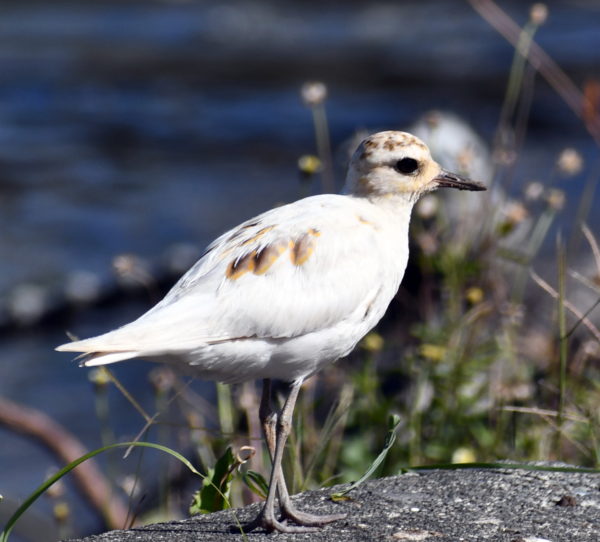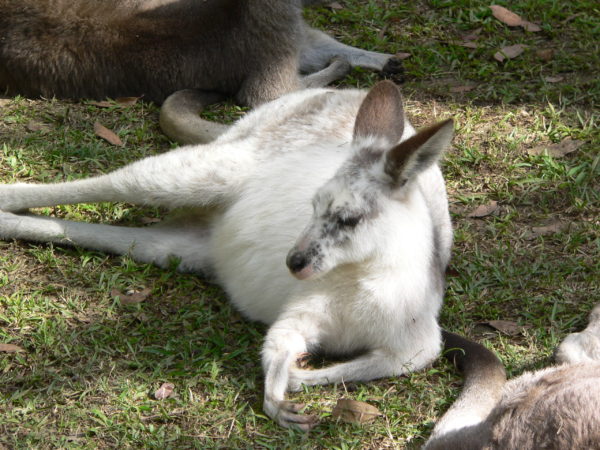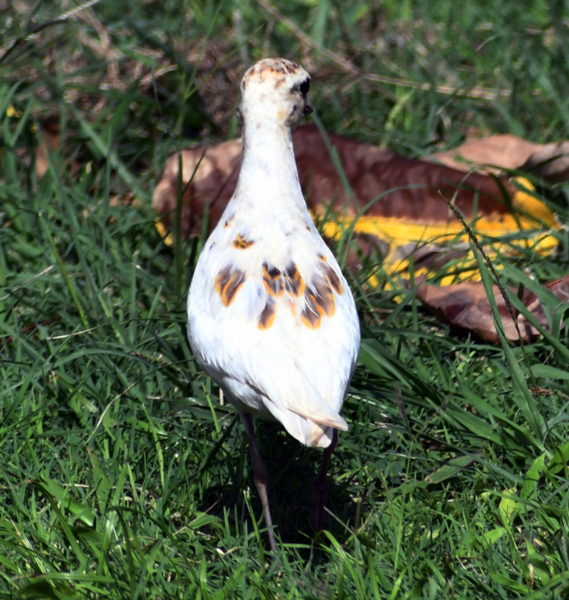Published in the Ocean Watch column, Honolulu Star-Advertiser © Susan Scott
November 25, 2017
Forget a white Christmas. We bird lovers are dreaming of a white kolea.
Last week reader Bill Coke emailed, “Recently spotted a leucistic Pacific golden plover.” Bill saw the rare bird at Kaneohe Bay’s Heeia Kea Small Boat Harbor. When I forwarded Bill’s pictures to plover expert Wally Johnson at Montana State University, he replied, “Wow! First leucistic plover sighting, Bill. Congratulations!”
 A rare white kolea has been spotted at Heeia Kea Small Boat Harbor.
A rare white kolea has been spotted at Heeia Kea Small Boat Harbor.
The bird is likely a leucistic animal, as it has nearly all white feathers but also
normally colored eyes, legs and bills, as well as a few patches of color on its feathers.
©2017 Susan Scott
Leucism is the term for a genetic disorder in domestic and wild animals in which the creature’s skin, fur or feathers are mostly white. Besides occurring in countless bird species, leucism is seen in nearly all invertebrates, amphibians, reptiles, fish, mammals and marsupials. I once saw a gorgeous leucistic kangaroo in the Irwin family’s Australia Zoo.

“Leu” means “white” in Latin, but leucistic animals are not albinos. A different genetic mutation causes albinism, resulting in no pigment whatsoever. Because blood vessels show through colorless irises, albinos’ eyes look red.
Birds with leucism have normally colored eyes, legs and bills, and most have patches of color on some feathers.
Leucistic animals don’t usually live long. White skin, fur or feathers are like a neon sign to predators that says “EAT HERE.”
Because kolea tend to stay in one foraging site all winter, I drove to Heeia Pier hoping to see this unusual bird for myself. And there stood Blanche (my name) on the curb at the entrance to the harbor parking lot just as Bill described.

In using female pronouns for the bird, I’m guessing. At this time of year, male and female Pacific golden plovers look alike. Come spring, these migratory shorebirds shed their drab winter coats and replace them with the brilliant breeding color feathers we kolea fans so admire.
As for Blanche, time will tell what her post-molt colors will be. The bird will likely stay white, not a good hue for a ground nester in Alaska’s summer tundra. But there’s hope. Blanche fledged in the Arctic, made it to Hawaii and has established a territory.
Several readers have emailed that they are missing their neighborhood kolea this fall, and wondered whether storms in Alaska or the Pacific killed some.
In response to my email query about this, Wally replied, “Given the long flight and life on the tundra, anything is possible. Some birds missing may be just normal mortality.” (Oahu has no official kolea census.)
If you visit Blanche, please don’t startle her into flying. Because she’s so visible, the bird needs her energy to avoid the large number (I counted 35) of feral cats that people feed at Heeia Pier and park.
We might not get white Christmases here on Oahu, but this year nature gave us a gift wrapped in white.